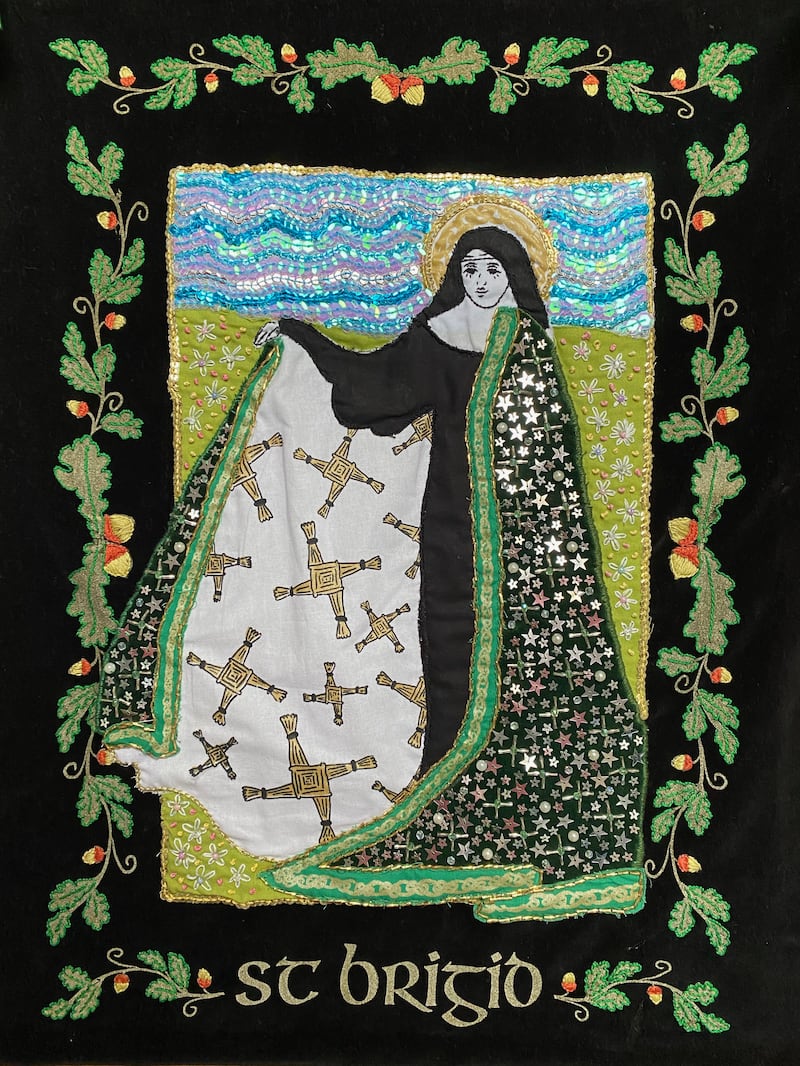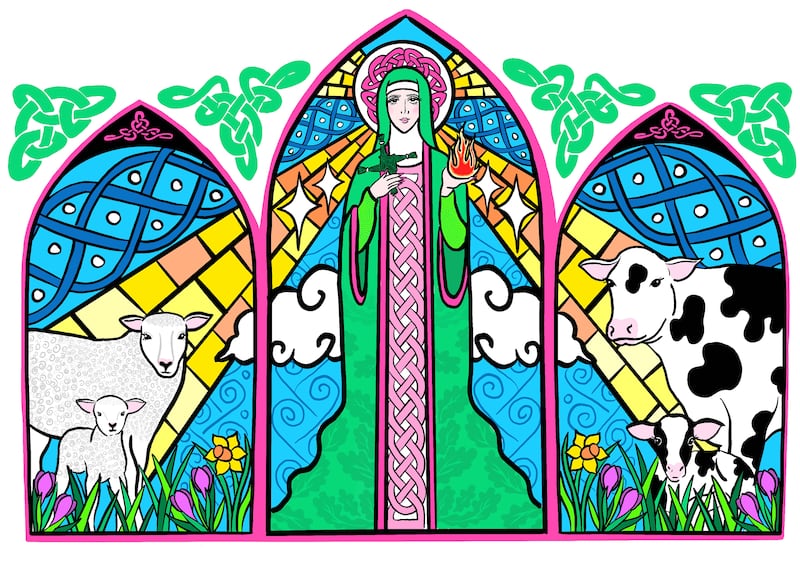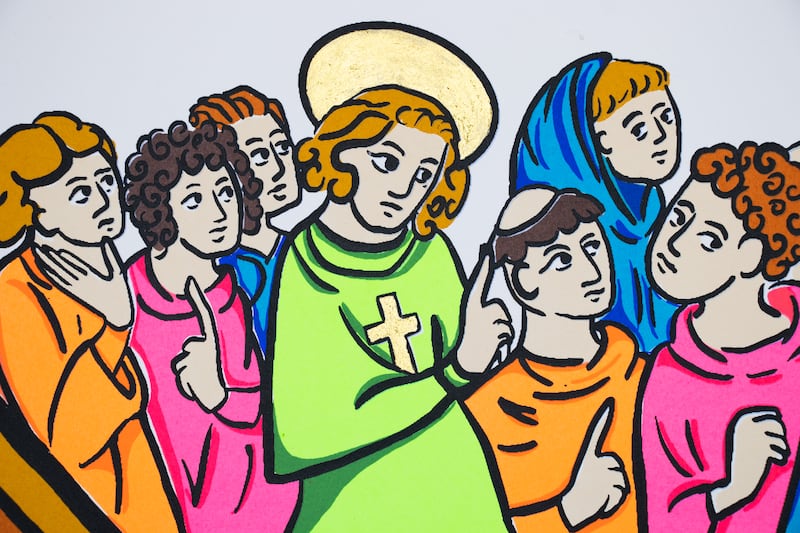Aoife Cawley’s work is nothing if not eye-catching. The young artist recently completed her degree show at Duncan of Jordanstone College of Art & Design, at the University of Dundee, in Scotland. Inspired by the Book of Kells, other illuminated manuscripts and medieval choir books, it’s a neon shock of playful, bold and colourful contextualisations of Irish saints. She is part of a new school of young Irish designers, printmakers, illustrators, graphic designers and textile artists bringing Celtic and old Irish Christian iconography into contemporary popular culture, with incredibly fun results.
In her latest show, featuring the saints Brigid, Patrick, Colmcille, Gobnait, Íta and Kevin, Cawley reframes – literally – these religious icons and their stories in an explosion of illuminations that are more at home under UV light than in ancient scriptoriums.
Cawley loved art at secondary school, “but I always steered towards something more academic,” she says. “I was quite good at languages, but I ended up dropping out of UL [the University of Limerick] when I was doing French, German and Irish. I still really love Irish, and I can speak it to quite a good level, but the academic learning of language wasn’t for me.” She began taking photographs on film, then, encouraged by friends who were at art college, took a portfolio course.
“Because I had done two years already I couldn’t get Susi,” she says, referring to the higher-education grant. “My mum and dad were already a bit raging that I dropped out of college, so I started looking for places that were cheap. Scotland was free for EU students at the time.” She applied for a fine-art photography degree at the University of Glasgow. “I went over, did the interview and missed out by one mark. Then I ended up getting into Dundee. It was going to be the last year I could get my fees funded before Brexit kicked in. I’m so glad I did. I completely changed my practice when I was there.”
READ MORE

Studying online at first, because of the pandemic, Cawley returned to embroidery, which she had enjoyed at school. “I was able to sit on the couch all day, doing embroidery, go to bed, wake up and stay there again until three or four in the morning, and then do it all over again. I started posting my embroidery on Instagram. I think because they weren’t traditional – mad, full of sequins – and because I started doing tarot-cards embroidery as well, it blew up. That’s how I really started.”
Once she was able to move back to Limerick after lockdown, as well as going to college she started going to Limerick Printmakers. “I love screen printing. I love how graphic it is. I never saw myself as a traditional painter or illustrator, but in screen printing you can make really vivid work.”

One of her inspirations was a hugely celebrated Irish artist. “I was very into the Irish language in school, and looking at the people reviving the language – I was really passionate about that. I saw the importance in the culture, the history, the language, the heritage. For the art-history exam there was a gallery visit; at the Hugh Lane I got introduced to Harry Clarke. I had never seen anything like it. I remember drawing his images, looking for more of his work. I was blown away by his stained glass. That led to iconography, saints ... It’s all very bling. I started embroidering those kinds of things, and started a practice around female saints. When you start reading about them, they’ve done mad things. It’s like mythology.”
In Limerick she had made friends with a nun after emailing a religious order to ask to learn more about St Cecilia. “We were best pals,” Cawley says of Sr Rose Miriam. “I’d meet up with her on my lunch, walking around Limerick with me in full leopard print and her in her habit. She was American and was able to tell me about stories of different saints and who I should look up. I told her a lot about St Brigid. I’m from Kildare, so I was brought up with St Brigid. It’s hard trying to explain that to people outside Ireland. My tutors were, like, ‘Where are your sources about St Brigid’s cloak?’ I’m, like, ‘Er, my ma told me.’”

Of the broader New Celtic Revival, Cawley says, “There are so many amazing illustrators, graphic designers, artists, who are dealing with this type of imagery ... I’m very, very proud to be Irish. I’m delighted it’s happening. We can use the language now in a way that’s not so strict. I’m seeing people on TikTok doing get-ready-with-me videos in Irish. It’s a living language. Manchán Magan is huge.”
Cawley also designs and sells enamel pins and scarves, and has hosted printmaking and embroidery workshops. She has a residency coming up at Creative Spark in Dundalk, as well as one in Florence, after an award from the Royal Scottish Academy. She’ll be travelling to the Italian city later this year to create new work. “It’s been mad. I’m really grateful,” she says. “I feel ready to put my all into this, and hopefully be able to make a living from doing all this weird art about saints. It’s bold, bright, crazy, funny. I want people to have a laugh but also revitalise these stories.”
















